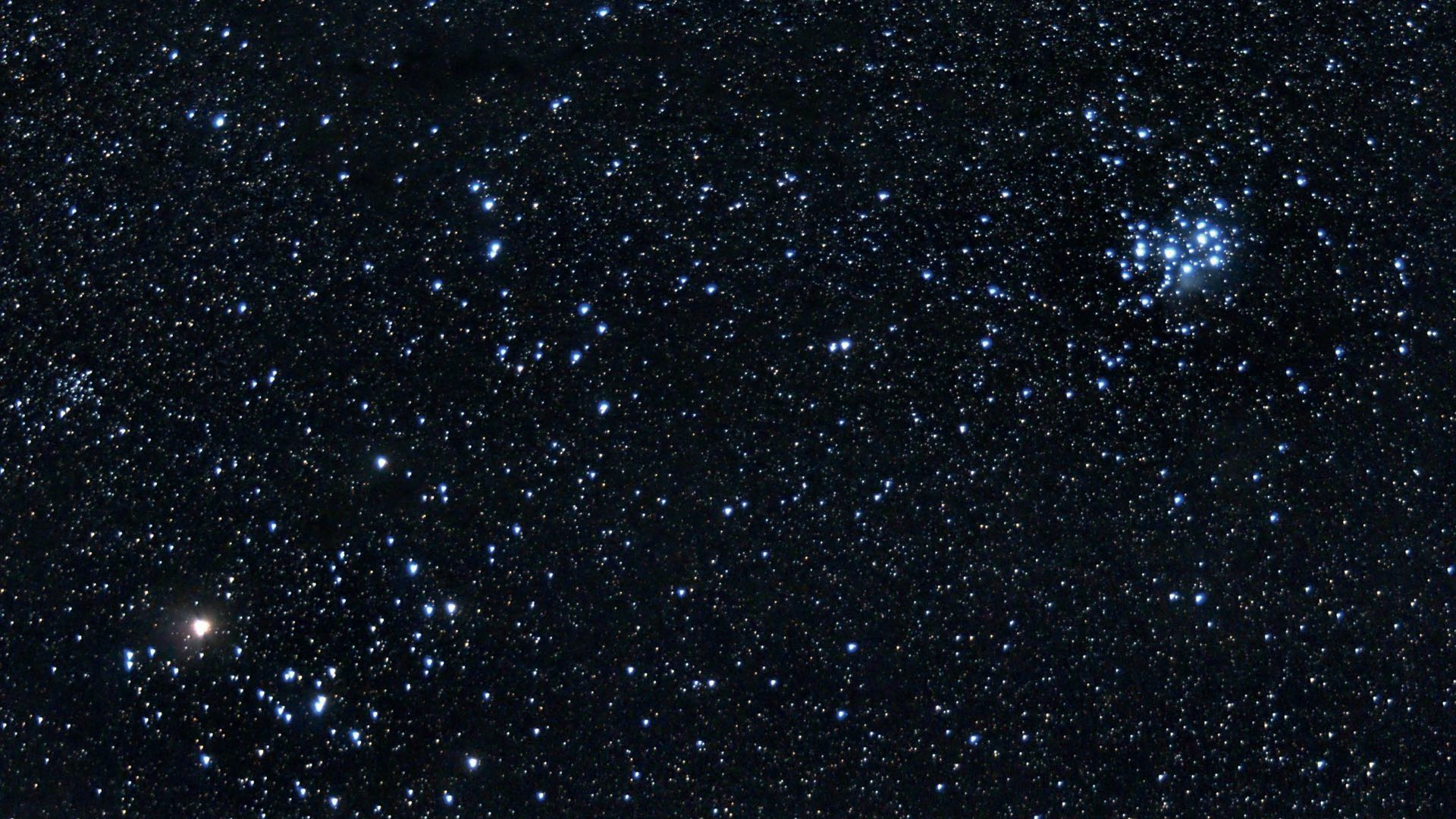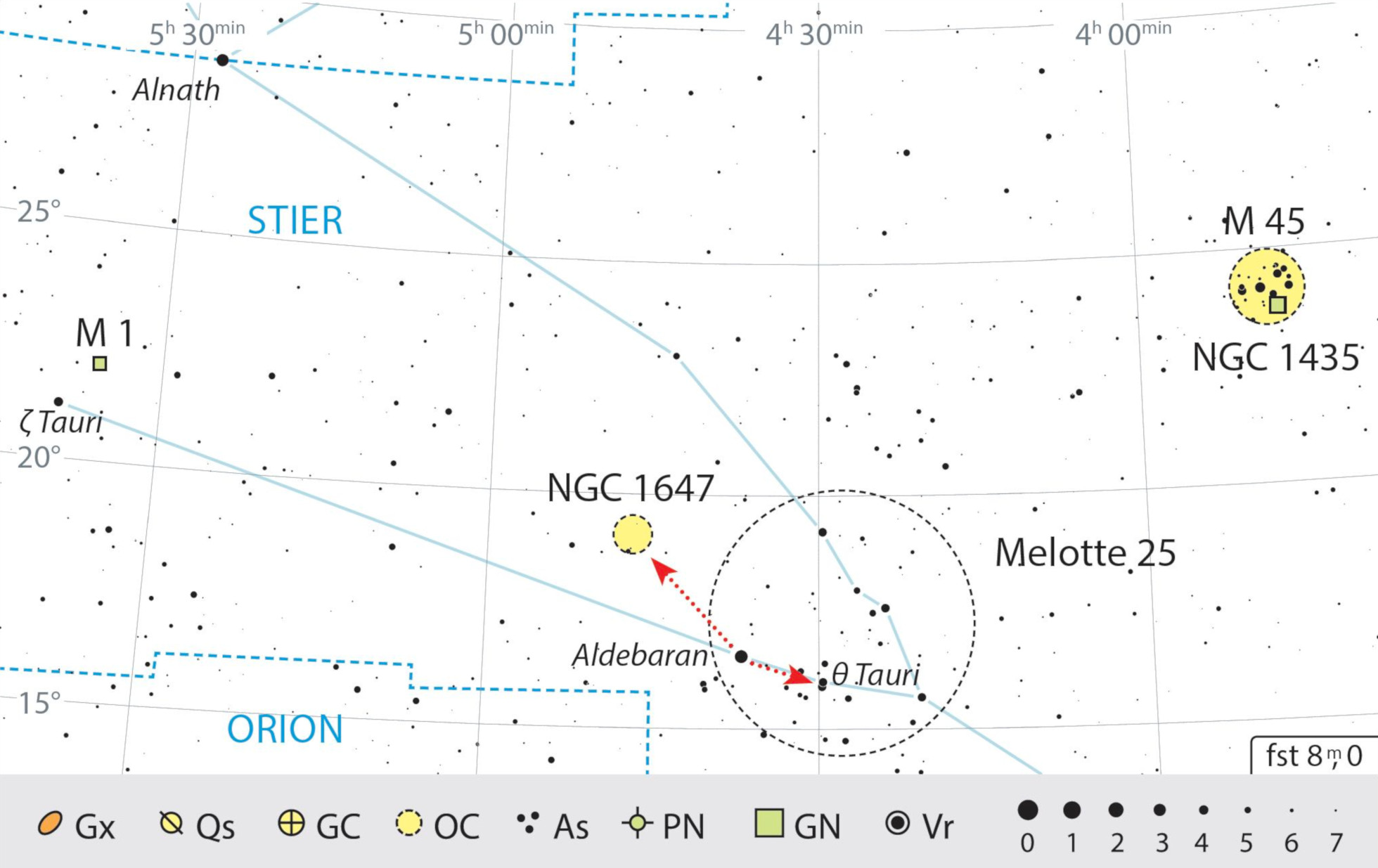The horns of Taurus
The Pleiades, Hyades and a supernova remnant: its proximity to the Milky Way bestows Taurus with a wealth of classic show-pieces.
 Besides the Pleiades (right in the picture) and the Hyades with Aldebaran (the bright star to the left of the picture), many other clusters can be found in Taurus, such as NGC 1647 (left above Aldebaran). Marcus Degenkolbe
Besides the Pleiades (right in the picture) and the Hyades with Aldebaran (the bright star to the left of the picture), many other clusters can be found in Taurus, such as NGC 1647 (left above Aldebaran). Marcus DegenkolbeEven with the naked eye, Taurus is one of the most impressive and richest constellations – and there’s even more to be discovered with the help of binoculars. The brightest star in Taurus is the reddish-gleaming Aldebaran, a star in the foreground of the Hyades open cluster. The Hyades are already visible to the naked eye, but become a rich field of stars when observed with binoculars.
Binary stars in the Hyades
It's worth taking a closer look: there are some binary stars in the so-called Rainy Ones - as the Hyades is also known - which is catalogued as Melotte 25. The easiest to resolve is θ Tauri, just one degree west of Aldebaran. Here, almost 6' separate two magnitude 3 stars, so it's visible even with the naked eye. Just 3.5° north-east of Aldebaran, NGC 1647 is a pale mist at first glance but which, on closer inspection, turns out to be a star cluster. Depending on magnification, the seeing, and the steadiness of your hand, it is possible to count up to around 15 stars with binoculars.
Old and young united
Already in prehistoric times, the Pleiades were recognized as a special feature of the night sky. After all, they are the most striking star cluster visible with the naked eye in the entire night sky. Of course, with binoculars, the observer is looking even more closely. The curved chain of stars in the south-east immediately catches the eye. The Merope Nebula NGC 1435, a reflection nebula south of the star of the same name, is extremely difficult to locate even when visibility is excellent, and even then appears only as a faint wisp.
At just under a thousand years old, the last stop on our tour is much younger than the Pleiades: Messier 1 is the remnant of a supernova first recorded by Chinese astronomers in the year 1054, and named the Crab Nebula due to its shape as observed through a telescope. Almost one degree north of the lower horn of Taurus, ζ Tau, there is a magnitude 6 and a magnitude 7 star. If you extend the line between them by about 0.5° to the west, you will come across a faint nebulous object, which looks somewhat elongated when you have a closer look.
You should not put your binoculars down at this point, however, because there are a whole series of other bright deep sky objects in Taurus, which can be easily discovered with the help of a good star chart.
 Location map of the objects presented. J. Scholten
Location map of the objects presented. J. ScholtenAuthor: Kay Hempel / Licence: Oculum-Verlag GmbH
